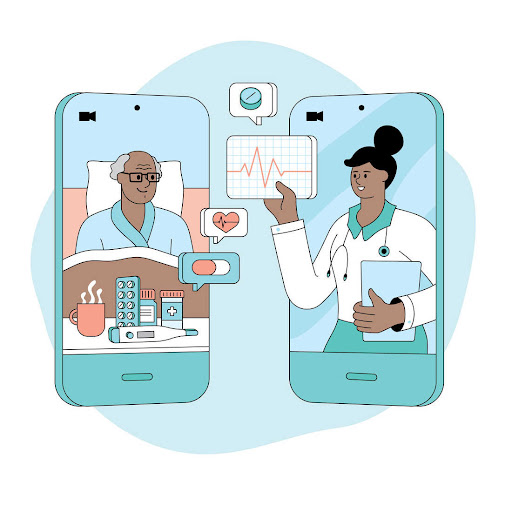Amazon Partners with Telehealth to Create Health Visits Through Alexa

Telehealth concept. Remote doctor patient consultation. Editable vectors on layers.
Image Courtesy of NPR.com
By Angela Hickey
The scientific community has been shaken as Teladoc has decided to partner with Amazon, utilizing the Alexa system to help users connect with healthcare providers from the comfort of their own homes. Amazon customers can connect with Teladoc simply by saying, “Alexa, I want to talk to a doctor.”
At the moment the system, titled “Telehealth,” can only be utilized for non-emergency visits, such as allergies or flu-like symptoms. At this point, visits are audio-only, but video visits are “coming soon,” according to a press release.
“Whether they’re taking care of their sick child in the middle of the night or wanting to ask a doctor about allergy symptoms in between meetings during the day, we hope this experience will help customers find the convenient help they want from the comfort of their own home,” Debra Chrapaty, vice president and chief operating officer at Amazon Alexa, said in a statement.
In the initial screening call, Teladoc collects medical history and insurance information from customers, according to Teladoc spokesperson, Marguerite Pinheiro, in an email to The Verge. Visits will be $75 for users without insurance. For users with insurance, costs will vary; under some plans, the call could be free.
While the initial launch yielded successful results, there are definitely some patients who think this system isn’t all that it’s cracked up to be.
The results of a poll done by NPR, the Robert Wood Johnson Foundation, and the T.H. Chan School of Public Health at Harvard, which surveyed patients in August and September, showed that around 42% of surveyors said someone in their household had used telehealth. Of those, 82% reported satisfaction, yet nearly two-thirds, or around 64%, stated that they would have preferred to see their nurse or doctor in person.
But, while some users reported that they would have preferred to see a health care provider in person, this is still quite the revolutionary system. When considering the population of people who live in highly populated areas or larger cities, Telehealth seems rather useless; when considering the majority of people who live in less densely populated or rural areas, Telehealth could be a life-saver.
“What’s going to be important is offering patients options and finding out what makes the most sense in a certain area,” says Rebekah Bernard, a Fort Myer, Fla. family physician and a board member of Physicians for Patient Protection, which advocates for better patient care. “I’m sure in rural areas or places where, for example, they don’t have a lot of specialists like psychiatrists, we really need to make sure we have access to telehealth for those patients.”
Despite still being in its early stages, Teladoc has achieved quite the medical feat. By utilizing this technological system that many people already have inside their homes, we as a society are one step closer to creating a more accessible health care system that can be beneficial to all.







